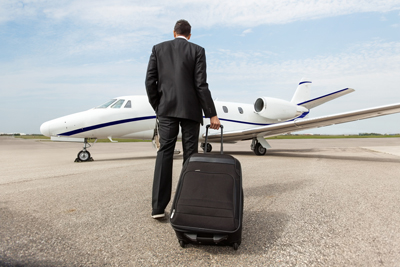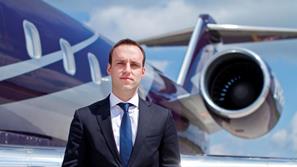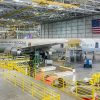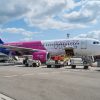 As the global economy is expected to grow at an annual rate of almost 3%, the already record high demand for air connectivity should remain on the ascending slope for quite some time. Meanwhile, business-related private travel industry hasn’t been performing particularly well. Despite the fact that Bombardier expects the global business jet fleet to grow at a CAGR of 3.7% over the next two decades (from 14 875 to 30 975 aircraft), many major markets still haven’t reached their pre-crisis growth rates. As a result, in order to meet the changing needs of corporate customers, many operators will have to consider tweaking their services accordingly.
As the global economy is expected to grow at an annual rate of almost 3%, the already record high demand for air connectivity should remain on the ascending slope for quite some time. Meanwhile, business-related private travel industry hasn’t been performing particularly well. Despite the fact that Bombardier expects the global business jet fleet to grow at a CAGR of 3.7% over the next two decades (from 14 875 to 30 975 aircraft), many major markets still haven’t reached their pre-crisis growth rates. As a result, in order to meet the changing needs of corporate customers, many operators will have to consider tweaking their services accordingly.
Global business travel spending is expected to reach record $1.18 trillion this year, nearly 7% up from 2013. The segment has been strongly driven by the booming markets in the emerging regions, a report by a US trade group states. Moreover, according to the Global Business Travel Association, spending within the segment will keep rising over the next four years, advancing by 8.6% in 2015, 7.1% in 2016, 6.9% in 2017 and 6.4% in 2018. Nevertheless, some other trends indicate that such forecasts must be viewed cautiously.
A modelling by Oxford Economics indicates that business travel expenditure by the US and European passengers will most probably fail to reach the pre-recession levels until  2014 and 2018, respectively. According to WINGX Advance, in 2013 the market was practically stagnant in the US, while in Europe it has even seen a decline of nearly 4%.
2014 and 2018, respectively. According to WINGX Advance, in 2013 the market was practically stagnant in the US, while in Europe it has even seen a decline of nearly 4%.
“Having been faced with the recent recession-related challenges in Europe and the US, Western companies have become increasingly cost-conscious, contributing to a decline in business-travel related profitability of many operators. For instance, local companies have become more reluctant to pay for short haul business class flights,” shares Vitalij Kapitonov, the CEO of KlasJet. “Therefore, it is evident that despite the healthy projections, not all markets and not all companies will thrive.”
According to the executive, having faced significant economic challenges, many businesses have started introducing more sophisticated tools to control their business expenses and making smarter use of such technological alternatives as videoconferencing. For instance, a recent Norwegian study found that videoconferencing saved time not only on travel and administration, but also made the meetings shorter and more efficient. This expense-cutting trend can be only expected to continue, as the recovering business travel segment may push the airfares and average hotel rates upwards as well. At the same time, however, while commercial airlines have been struggling to fill their business class seats, business charter operators seem to have been little affected by the new trends, with some seeing a yearly threefold growth over the last few years.
“Some may be surprised that while usually a private charter flight will cost more than a first-class commercial flight, the former option can actually be remarkably economic. Considering the average expenses on overnight trips are constantly increasing, the ability to reach multiple locations in a day is becoming a viable cost-saving option. Not to mention the benefits stemming from the possibility to travel in a group to a remote location,” shares Vitalij Kapitonov, the CEO of KlasJet. “All in all, despite the cost-saving efforts of corporations, the demand for business travel continues to rise. Consequently, the challenge now is to decide which markets to target and where to invest in order to benefit from this growth.”





